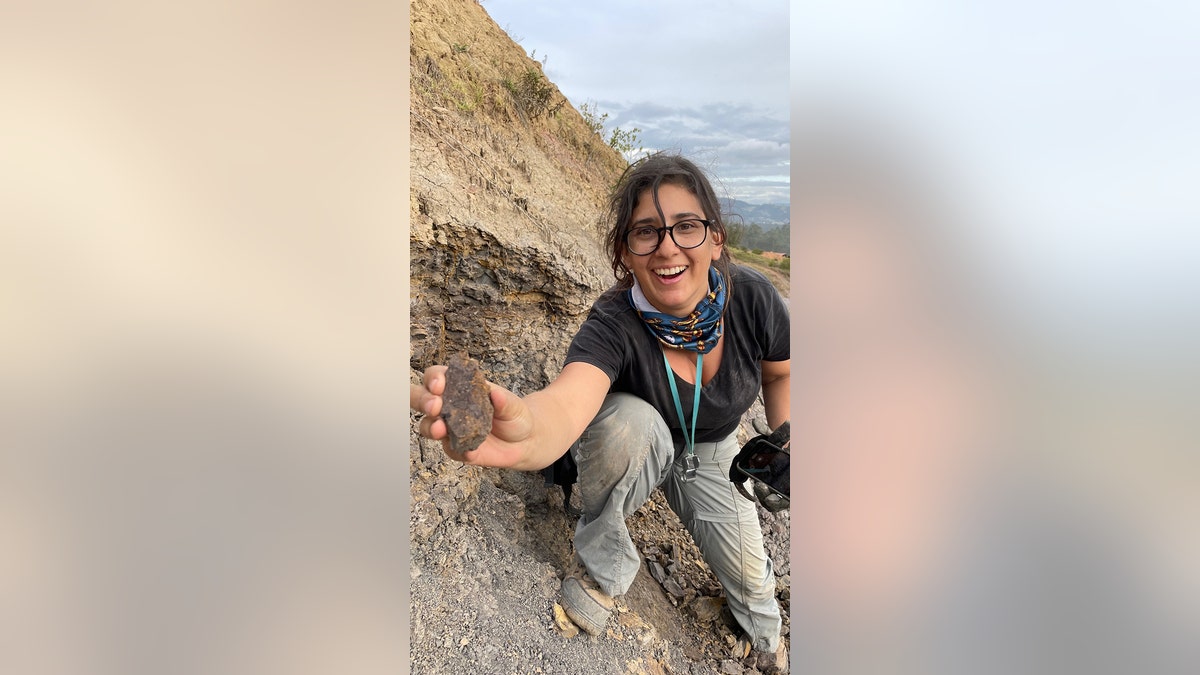A group of scientists with Chicago’s Field Museum recently discovered grape fossil seeds that could connect dinosaurs to today’s numerous wine offerings.
The South America study found nine new species of fossil grapes dating back to at least 19 million years ago — with the oldest one found in a 60-million-year-old rock.
Dr. Fabiany Herrera, assistant curator of paleobotany at The Field Museum, led the study.
NEW ENGLAND’S SIZZLING SUMMER FLAVOR COMES FROM FRIED CLAMS: HERE ARE 5 SIZZLING SPOTS TO FIND THEM
The discovery proved that grapes spread across the world after the extinction of the dinosaurs, as a press release noted.
“These are the oldest grapes ever found in this part of the world, and they’re a few million years younger than the oldest ones ever found on the other side of the planet,” Herrera said in the release.

“I’ve been looking for the oldest grape in the Western Hemisphere since I was an undergrad student,” said the study’s leader. As a result of the new findings, the fossil record of grapes in the New World has been revised. (iStock)
The seeds found in Colombia, Panama and Peru could be anywhere between 19 and 60 million years old, according to the press release.
Dr. Monica Carvalho, an assistant curator at the University of Michigan’s Museum of Paleontology and the study’s co-author, said that years ago, dinosaurs were likely knocking down trees while moving through the forests — ultimately leading ecosystems to die out.
MEET THE AMERICAN WHO SAVED THE CHAMPAGNE INDUSTRY: MISSOURI SCIENTIST CHARLES VALENTINE RILEY
“We think that if there were large dinosaurs roaming through the forest, they were likely knocking down trees, effectively making forests more open than they are today,” she said in a media statement.

The earliest fossil grape from the Western Hemisphere is approximately 60 million years old, scientists discovered. (SWNS)
However, once dinosaurs became extinct some 66 million years ago, plants re-grew in areas in South America — and trees formed in close quarters, said Herrera.
ANCIENT NATURAL WINE-MAKING TRADITIONS GAIN NEW FOLLOWERS IN THE US
“In the fossil record, we start to see more plants that use vines to climb up trees, like grapes, around this time,” he said.
He explained further why he wanted to discover the “needle in a haystack” in South America.

Dr. Monica Carvalho, an assistant curator at the University of Michigan’s Museum of Paleontology and the new study’s co-author, spotted the oldest grape fossil in what scientists said was a needle-in-a-haystack discovery. (SWNS)
“I’ve been looking for the oldest grape in the Western Hemisphere since I was an undergrad student,” he said.
Herrera added that Carvalho was the one who found the first grape fossil.
CLICK HERE TO SIGN UP FOR OUR LIFESTYLE NEWSLETTER
He said she yelled, “Fabiany, a grape!”
He said, as the press release stated, “I looked at it [and] I was like, ‘Oh my God.’”

Grape fossils were found for the first time in the Western Hemisphere — and dinosaurs may have had something to do with the location. (iStock/SWNS)
Carvalho also said, “In excavating the fossil record in the New World tropics, we found seeds that are related to the grape family that date back to 60 million years ago. That led us to revise the fossil record of grapes in the New World,” according to the University of Michigan’s website.
She added, “The oldest seed we found is closely related to the large group that gave rise to commercial grapes, to the subfamily Vitoideae.”
WORLD’S OLDEST WINE DISCOVERED IN ANCIENT ROMAN BURIAL SITE
“We have this rich but previously poorly known fossil record for grapes in the New World, and what we’re seeing is this family has a complex history of extinction and dispersal in the New World,” she also said, according to the same source.

The new study done in South America fleshes out the history of grapes in the Americas and Caribbean. (iStock)
After conducting CT scans, the scientists were able to confirm the fossil based on shape, size and other unique features, according to the press release.
After the first fossil was found, scientists found eight other new types of fossil grapes in the South American region.
CLICK HERE TO GET THE FOX NEWS APP
Carvalho said the new study fleshes out the history of grapes in the Americas and Caribbean, according to the University of Michigan’s website.
“There was a very large gap in the fossil record of grapes, after the extinction of dinosaurs. By about 50 million years ago, we see fossil grapes in North America and Europe,” she said.

“There was a very large gap in the fossil record of grapes, after the extinction of dinosaurs,” said one of the study’s researchers. “By about 50 million years ago, we see fossil grapes in North America and Europe.” (iStock)
“At the time, when the planet was warmer, grapes had a wider distribution in high, northern latitudes, but we didn’t really know much about the history of this group in tropical latitudes. That’s where our work comes in.”
Fox News Digital reached out to the study authors for further comment.
The Field Museum of Natural History in Chicago is one of the largest museums of its kind in the world.
The U.S. is home today to nearly 11,700 wineries.
California, the state that’s home to the highest population in the U.S. and the most vineyards in the nation, consumed the most wine in 2021, at over 155 million gallons, according to VinePair, which cited other sources as well.
For more Lifestyle articles, visit www.foxnews/lifestyle
In second place was Florida, having consumed 83.2 million gallons, and Texas took third with 65.6 million gallons.
The U.S. is home today to nearly 11,700 wineries, according to the Wines Vines Analytics Winery Database.
